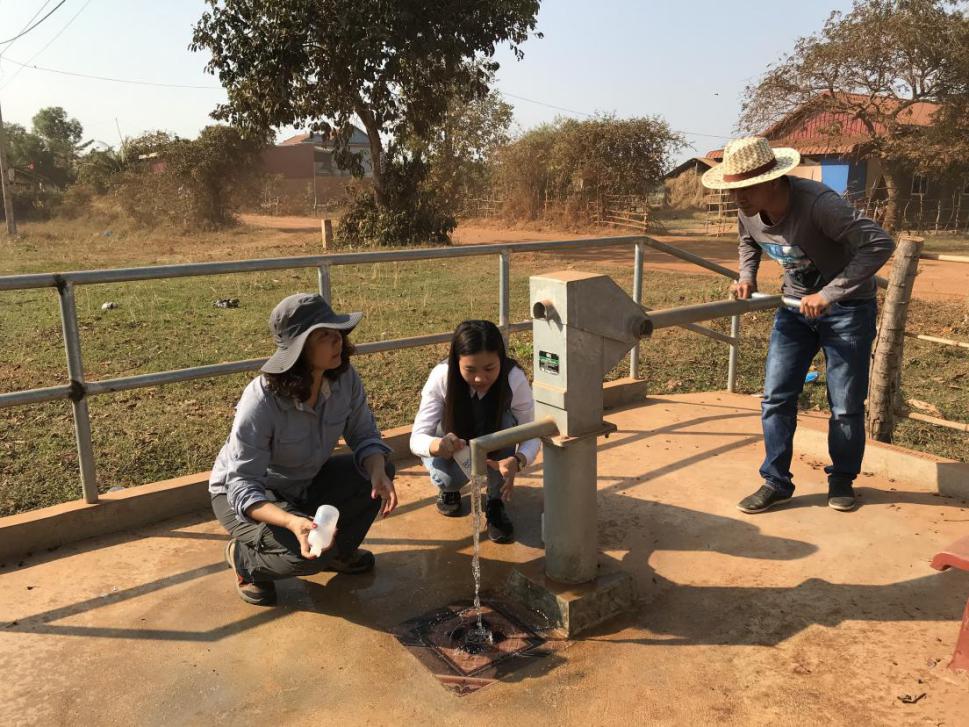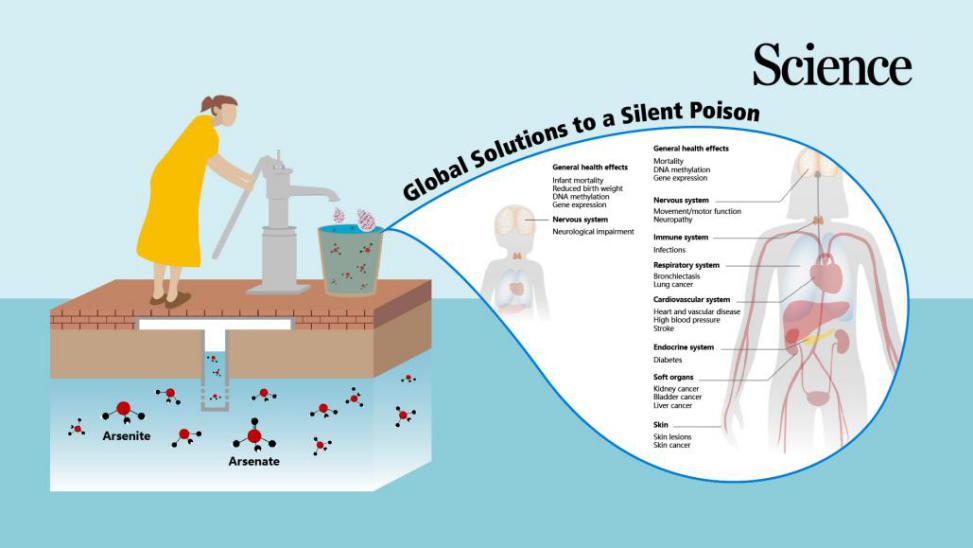CAS A environmental scientist offers perspective on ending arsenic exposure from well water
Author :wangwc
2020-05-25 12:37
In 2010 the U.N. agreed to a resolution declaring the human right to "safe and clean drinking water and sanitation." The safety of drinking water is a vital issue for many communities around the world. Chair Professor Yan Zheng, School of Environmental Science and Engineering from Southern University of Science and Technology (SUSTech) was invited to publish a perspective article, titled "Global Solutions to a Silent Poison" in Science (IF = 37.2). Her article accompanied "Global Threat of Arsenic in Groundwater" by Joel E. Podgorski and Michael Berg of the Swiss Federal Institute of Aquatic Science and Technology
Yan Zheng is an expert in water and health, with a focus on groundwater quality. Her experience extends from a Ph.D. in earth and environmental sciences from Columbia University to a water and sanitation specialist for the United Nations Children's Fund in Bangladesh. She has held academic appointments at Peking University, City University of New York (CUNY), and Columbia University. She has been named a Fellow of the Geological Society of America.
Zheng's article in Science discussed widespread drinking water arsenic exposure stemming from reliance on domestic wells for supply in many rural communities around the world. There is a desperate need for screening for arsenic in domestic well water in these communities, even in wealthy countries like the United States of America. Her article called to identify people suffering from arsenic exposure as part of a larger plan to eliminate arsenic exposure in drinking water.
Zheng had previously covered this issue in a paper she wrote with her former student Sara V Flanagan (Columbia University) and former colleague Richard B Johnston (now with the World Health Organization). Their paper was titled "Arsenic in tube well water in Bangladesh: health and economic impacts and implications for arsenic mitigation." That paper was published in the Bulletin of the World Health Organization (IF = 6.8). In that paper, the authors found that 45 million people were drinking well water containing unsafe levels of arsenic. It was leading to 1 death in every 18 adult deaths (about 6%). Yet, incomplete data meant that global information on this problem was highly inconsistent.

Figure 1 Prof. Yan Zheng is collecting dosmetic drinking water in Cambodia
Zheng's article in Science also looked at the most recent WHO provisional guideline values for drinking water at ten micrograms of inorganic arsenic per liter. It is encouraging that many countries have revised their drinking water standard down from 50 micrograms per liter, with several adopting more health-protective five micrograms as their standards. However, in Bangladesh, and parts of India, and even China, the less health-protective 50 microgram standard is still permitted for dispersed rural population due to the lack of high-quality water sources.

Figure 2 The health impact of InAs exposure on adults and children
The diverse range of standards is highly concerning, given that inorganic arsenic is highly toxic. It has been listed as a class I carcinogen by the International Agency for Research on Cancer for many years. Its colorless, tasteless and odorless nature, when dissolved in water, has given it the unfortunate title of "the king of poisons" and "the poison of kings."
Long-term exposure of inorganic arsenic has been shown to affect the development of the fetus and infants, with long-lasting effects later in life. Plenty of studies have shown adverse health effects on many parts of the human body, possibly involving the epigenome as a mechanism of inorganic arsenic's toxicity.
Yan Zheng assessed the Podgorski and Berg paper that was also published in today's issue of Science. Their paper compiled more than two hundred thousand well water arsenic data points in 67 countries. They developed a statistical model that suggested that between 94 and 220 million people, 94% of which live within the Asian continent, are at risk of drinking well water that contains more than ten micrograms of arsenic per liter.
Their model also identifies potential areas around the world where the local water supply exceeds five micrograms of arsenic per liter. However, few countries carry out national arsenic screening of their domestic well water supplies, so this study highlights the gap between known and unknown arsenic screening.
In closing her article, Yan Zheng emphasizes the desperate need to screen for arsenic in domestic wells, particularly in predicted high-risk areas. The development of sensitive, reliable, inexpensive, and user-friendly testing methods will improve screening methodologies while identifying exposed populations. It is also cheaper to minimize the impact of arsenic through prevention, rather than treat the impact of arsenic exposure.
The above research was funded by the Strategic Pilot Technology Special Project (XDA20060402) of the Chinese Academy of Sciences.
The article is cited as follows:
Zheng Y. (2020). Global solutions to a silent poison. Science, 368 (6493), 818-819.
Article link: https://science.sciencemag.org/content/368/6493/818.full
Yan Zheng's homepage: http://faculty.sustech.edu.cn/yan.zheng/en/
Source: Office of Research, SUSTech
Correspondent: Huihui JIA
Editor: Yan ZHENG
Translated and Adapted: Chris Edwards
Proofread: Yingying XIA
